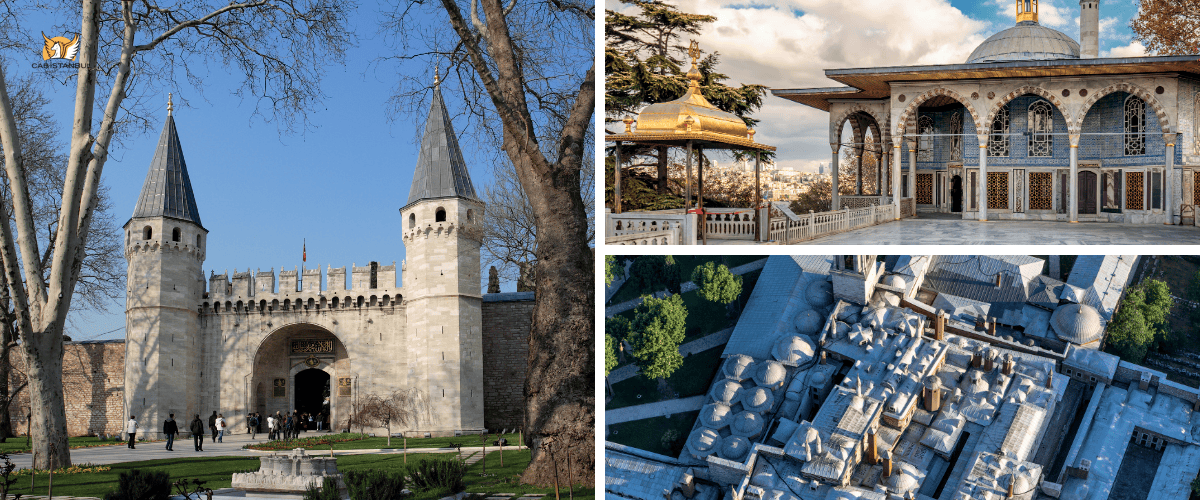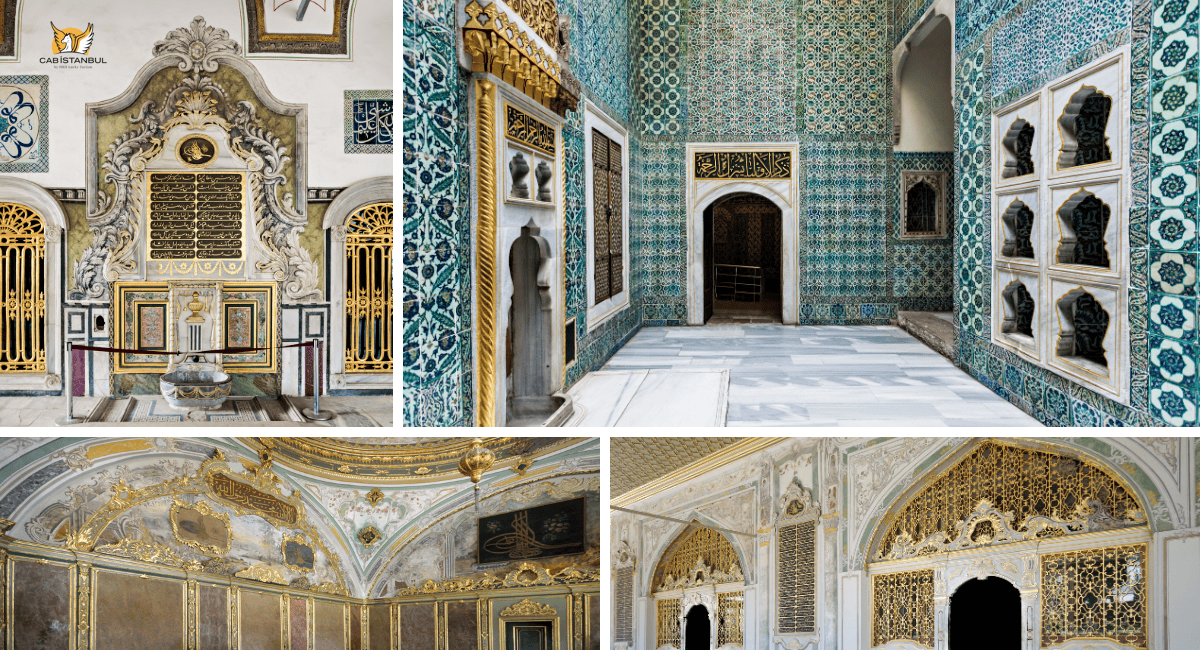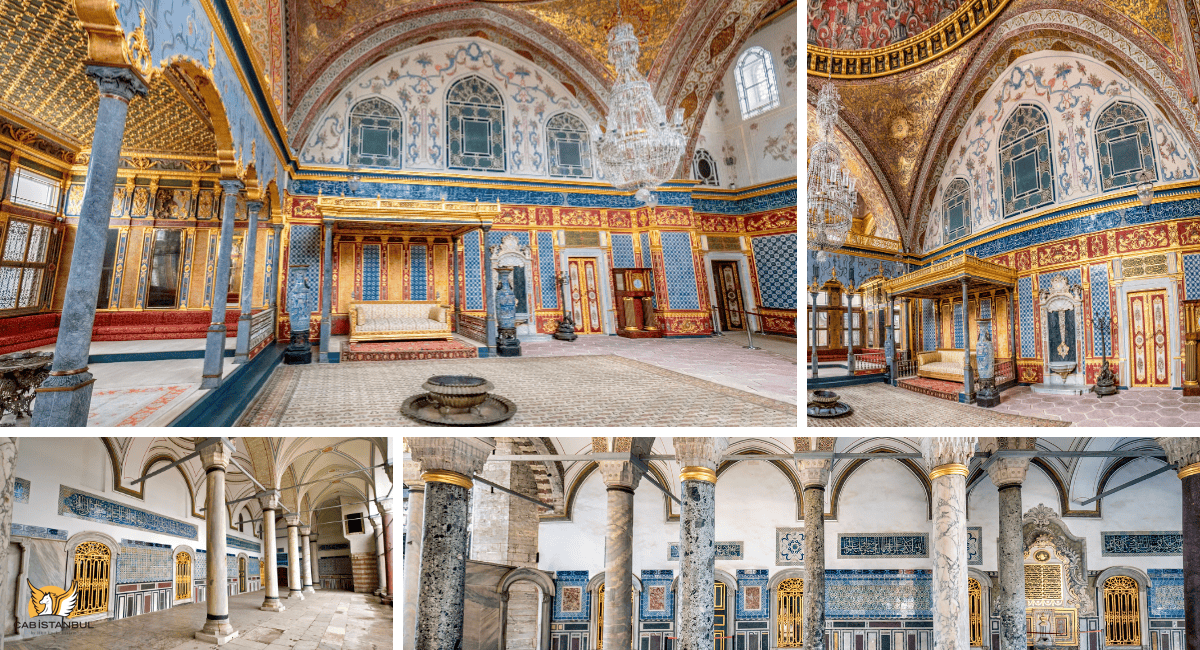Topkapi Palace Museum Istanbul Turkey
2026-01-08

Topkapı Castle
Topkapı Palace Museum, a symbol of Ottoman grandeur located in Istanbul’s historic Sultanahmet district. Built in the 15th century, this iconic palace served as the residence and administrative hub of Ottoman sultans for nearly 400 years. A UNESCO World Heritage site, the palace features stunning courtyards, opulent chambers, and intricate architecture that tell the story of an empire spanning continents.
Explore the Imperial Harem, a private sanctuary of the sultan's family, and the Treasury, home to dazzling jewels like the Topkapı Dagger and the Spoonmaker’s Diamond. Stroll through the Second Court, where state matters were conducted, and marvel at the exquisite Baghdad Pavilion and Revan Kiosk in the Fourth Court, offering breathtaking views of Istanbul.
The museum also houses priceless collections of Islamic manuscripts, Ottoman miniatures, and Chinese porcelain, alongside sacred relics in the Chamber of Sacred Relics. From the Imperial Gate to the lush gardens and fountains, every corner reveals the splendor of Ottoman art and history.
As we guide you through the highlights and hidden gems of the Topkapı Palace Museum, enhance your visit to Istanbul's historic sites with our premium car rental service, inclusive of a knowledgeable driver, and ensure a smooth transition to and from the city with our reliable private airport transfer service.
Topkapı Palace Museum
Topkapı Palace
The Topkapı Palace stands as a monumental tribute to the Ottoman Empire, serving not just as a residence for its sultans but also as a vibrant administrative and educational hub. Constructed between 1460-1478 under the reign of Sultan Mehmed II, this architectural marvel has undergone numerous transformations, adapting to the evolving needs of the empire while retaining its royal allure. Initially the heart of Ottoman power, the palace transitioned into a ceremonial role in the mid-19th century, making way for the Dolmabahçe Palace on the Bosphorus. Despite this shift, the Topkapı Palace continues to safeguard the imperial treasury, archives, and revered relics of Prophet Muhammad, remaining a cherished symbol of the Ottoman legacy.
Topkapı Palace Harem
Derived from the Arabic verb meaning "to cover or to shield," the harem of Topkapı Palace unveils a world shrouded in mystery and fascination. Reserved exclusively for the sultan's family and meticulously designed to ensure seclusion, the harem was a sanctuary of power, intrigue, and opulence. It was here that the sultan’s mother, wives, concubines, and offspring resided, each playing a role in the complex hierarchy of the Ottoman court. The relocation of the Ottoman Harem to the Dolmabahçe Palace in 1853 did not diminish its allure, as it continues to captivate imaginations with its intricate kiosks and storied chambers. Notably, the central location of the Valide Sultan’s kiosk underscores her paramount authority, while the splendor of the Sultan's chamber reflects the zenith of Ottoman extravagance.
Ottoman Palace
The Topkapı Palace complex, a sprawling testament to Ottoman ingenuity and artistry, is divided into distinct sections, each telling a unique story of power, culture, and beauty. Among its main gates and gardens, the palace houses the enigmatic Harem, the fragrant Rose Garden, and numerous other pockets of splendor. The original palace, commissioned by Fatih Sultan Mehmet post-Constantinople conquest, laid the foundation for what would become a symbol of the empire’s grandeur. Influenced by the architectural splendor of the Edirne Palace, Topkapı Palace embodies a harmonious blend of courtyards, gardens, and royal chambers, encapsulating the essence of Ottoman sophistication.
Topkapı Palace History
The inception of Topkapı Palace was marked by a desire to embody the grandeur of previous Ottoman accomplishments, drawing inspiration from the Edirne Palace built by Sultan Murad II. The palace's strategic location at the tip of the Istanbul peninsula provides panoramic views of the Marmara Sea, Bosphorus, and Golden Horn, further accentuated by its encompassing Byzantine walls. Spanning across approximately 700,000 square meters, the majority of which is dedicated to royal gardens, Topkapı Palace is a masterful orchestration of space, power, and beauty, standing as a timeless tribute to the Ottoman Empire’s enduring legacy.
Topkapi Museum
Belongings of the Prophet Muhammad
The Topkapı Palace Museum houses the sacred Holy Relics, revered items believed to have belonged to Prophet Muhammad, his companions, and other prophets of Islam. These treasures, considered deeply sacred, were brought to Istanbul after the conquest of Egypt by Yavuz Sultan Selim in 1517 and later enriched with acquisitions from other Islamic lands. Today, these precious relics are displayed in the Sacred Relics Department of the Privy Chamber, offering visitors a profound connection to Islamic history.
The Holy Relics of Topkapı Palace
The collection includes the Hırka-i Saadet (the Prophet's sacred cardigan), his golden chest, seal (Seal of Bliss), sandal (Nal-ı Saadet), sword hilt, a footprint, and strands of his beard. Additionally, the Name-i Saadet, a letter sent by the Prophet, and personal items of Fatima, including her prayer rug, cardigan, and shirt, are displayed.
Other treasures include the Sanjak-i Sharif, swords of the Companions-i Kiram, the Hacerü'l-Esved enclosure (Black Stone), the Kaaba’s key and locks, and a golden water trough of the Kaaba. The collection also features models of Masjid an-Nabawi and Masjid al-Aqsa, the Prophet David’s sword, and the Prophet Abraham’s pot.
These artifacts, preserved at the Topkapı Palace Museum, provide an unparalleled glimpse into the spiritual and historical richness of the Islamic world.
Topkapi Palace Istanbul

Spoonmaker's Diamond
The Spoonmaker's Diamond a dazzling 86-carat diamond, is one of the crown jewels of the Topkapı Palace Museum. Encircled by a double row of 49 smaller diamonds, this extraordinary gem is recognized as one of the 22 most famous diamonds globally. The diamond's luminous presence and intricate design reflect the grandeur and craftsmanship synonymous with the Ottoman era, making it a must-see attraction within the museum.
Topkapı Palace Inner and Outer Courts
Topkapı Palace, a masterpiece of Ottoman architecture, is divided into two primary sections: the inner palace (Haramlik) and the outer palace. The inner palace was the private domain of the sultan's family, providing seclusion and luxury. In contrast, the outer palace housed various facilities and grand banquet halls, all organized in accordance with the palace's overarching architectural principles, seamlessly blending functionality with imperial grandeur.
Topkapı Palace Kitchen
The Topkapı Palace kitchen houses an exquisite collection of Ottoman glass and porcelain, crafted using three distinct techniques: Fountain glasses, Opaline glasses, and Crystal and White glasses. The Ottoman Porcelains within the collection, exclusively produced for palace use, are categorized into two groups: pieces marked with "Eser-i Istanbul" (Art of Istanbul) and Yıldız Porcelains. The Art of Istanbul porcelains, representing the Ottoman Empire's initial foray into porcelain production, were crafted in the Beykoz workshops during Sultan Abdulmecid’s reign (1839-1861).
Topkapı Palace War Equipment
Topkapı Palace serves as a repository for the Ottoman army's historical war equipment, meticulously produced in various workshops and preserved in arsenals for regular maintenance and repair. The inaugural Ottoman war equipment workshop was established in Edirne. Following the conquest of Istanbul, Fatih Sultan Mehmet repurposed the Hagia Eirene Church, located within the palace’s First Courtyard, for this function, a role it maintained until the close of the 19th century.
In 1922, following the dissolution of the Ottoman Empire, Mustafa Kemal Ataturk decreed the transformation of Topkapı Palace into a museum, officially inaugurated on April 3, 1924. Today, the museum stands as a testament to Islamic history, showcasing sacred relics from Saudi Arabia, the Ottoman Empire's royal treasures, weaponry, sultanic garments, jewelry, and various artifacts reflecting the era’s opulence.
Visit Topkapi Palace Istanbul

Topkapi Museum Opening Hours
Planning your visit to the Topkapı Palace Museum? Here’s everything you need to know about opening hours, closing times, and key highlights.
| Season | Hours | Areas Included |
|---|---|---|
| Summer Season | 9:00 AM to 6:00 PM | Museum, Harem, Hagia Irene |
| Winter Season | 9:00 AM to 4:45 PM | Museum, Harem, Hagia Irene |
| Closing Days | Every Tuesday, May 1st, the first day of Ramadan, and the first day of Sacrifice Feast. |
Key Exhibits and Locations
- Second Courtyard: Royal Arms & Jewelry, Clocks, Kitchens
- Third Courtyard: Holy Relics of Islam, Grand Treasury (Closed for restoration)
Additional Information
- Last Admission: One hour before closing time.
- To make the most of your visit, explore the Harem and Sacred Relics early in the day to avoid crowds.
Plan your visit to this historical treasure trove and immerse yourself in the splendor of the Ottoman Empire.
Tickets For Topkapi Palace Istanbul
If you’re planning a visit to the Topkapı Palace, here’s the updated ticket information for 2024, including bundled options and individual section prices.
| Ticket Type | Price (TL) | Price (EUR) | Price (USD) | Includes |
|---|---|---|---|---|
| Palace & Harem Bundle | 1700 TL | €47 | $50 | Access to the Palace and Harem |
| Harem (Only) | 600 TL | €17 | $19 | Harem Section Only |
| Hagia Irene (Only) | 600 TL | €17 | $19 | Hagia Irene Museum Only |
Additional Information
- Tickets for the Palace and Harem are now bundled together for convenience, priced at 1700 TL.
- Separate tickets are available for specific sections like the Harem or Hagia Irene.
- Prices are subject to currency fluctuations; conversion rates provided are approximate.
Ensure to purchase tickets from official counters or authorized online platforms to avoid overpricing.

Write a Comment !